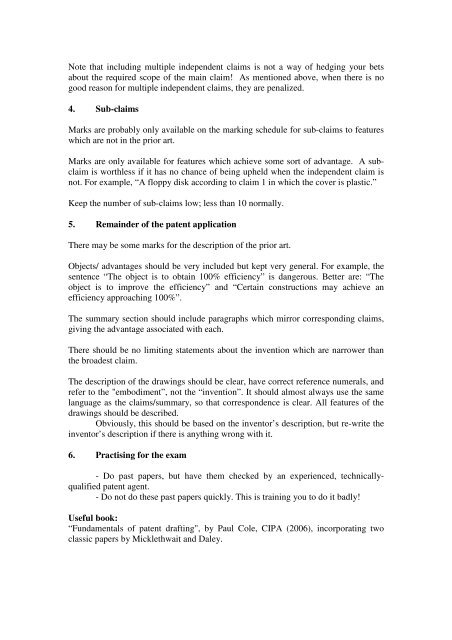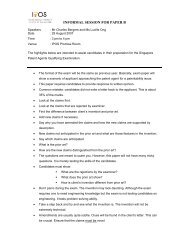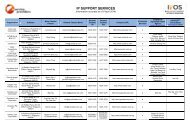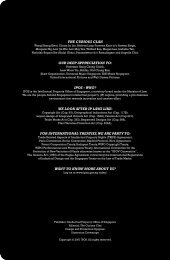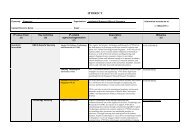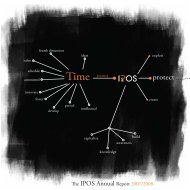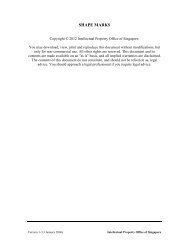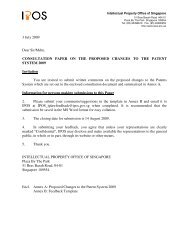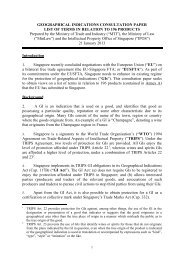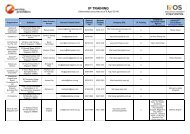Notes on Paper A â Tim Watkin The following notes are a summary ...
Notes on Paper A â Tim Watkin The following notes are a summary ...
Notes on Paper A â Tim Watkin The following notes are a summary ...
You also want an ePaper? Increase the reach of your titles
YUMPU automatically turns print PDFs into web optimized ePapers that Google loves.
Note that including multiple independent claims is not a way of hedging your bets<br />
about the required scope of the main claim! As menti<strong>on</strong>ed above, when there is no<br />
good reas<strong>on</strong> for multiple independent claims, they <strong>are</strong> penalized.<br />
4. Sub-claims<br />
Marks <strong>are</strong> probably <strong>on</strong>ly available <strong>on</strong> the marking schedule for sub-claims to features<br />
which <strong>are</strong> not in the prior art.<br />
Marks <strong>are</strong> <strong>on</strong>ly available for features which achieve some sort of advantage. A subclaim<br />
is worthless if it has no chance of being upheld when the independent claim is<br />
not. For example, “A floppy disk according to claim 1 in which the cover is plastic.”<br />
Keep the number of sub-claims low; less than 10 normally.<br />
5. Remainder of the patent applicati<strong>on</strong><br />
<strong>The</strong>re may be some marks for the descripti<strong>on</strong> of the prior art.<br />
Objects/ advantages should be very included but kept very general. For example, the<br />
sentence “<strong>The</strong> object is to obtain 100% efficiency” is dangerous. Better <strong>are</strong>: “<strong>The</strong><br />
object is to improve the efficiency” and “Certain c<strong>on</strong>structi<strong>on</strong>s may achieve an<br />
efficiency approaching 100%”.<br />
<strong>The</strong> <strong>summary</strong> secti<strong>on</strong> should include paragraphs which mirror corresp<strong>on</strong>ding claims,<br />
giving the advantage associated with each.<br />
<strong>The</strong>re should be no limiting statements about the inventi<strong>on</strong> which <strong>are</strong> narrower than<br />
the broadest claim.<br />
<strong>The</strong> descripti<strong>on</strong> of the drawings should be clear, have correct reference numerals, and<br />
refer to the "embodiment”, not the “inventi<strong>on</strong>”. It should almost always use the same<br />
language as the claims/<strong>summary</strong>, so that corresp<strong>on</strong>dence is clear. All features of the<br />
drawings should be described.<br />
Obviously, this should be based <strong>on</strong> the inventor’s descripti<strong>on</strong>, but re-write the<br />
inventor’s descripti<strong>on</strong> if there is anything wr<strong>on</strong>g with it.<br />
6. Practising for the exam<br />
- Do past papers, but have them checked by an experienced, technicallyqualified<br />
patent agent.<br />
- Do not do these past papers quickly. This is training you to do it badly!<br />
Useful book:<br />
“Fundamentals of patent drafting", by Paul Cole, CIPA (2006), incorporating two<br />
classic papers by Micklethwait and Daley.


